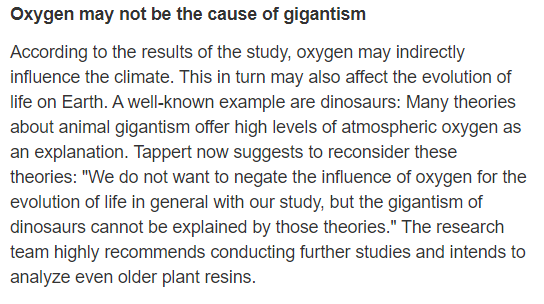Birds, however, can easily fly over the Everest. What gives them such great lungs? They got them from the dinos. But why did the dinosaurs have them?
🧵👇🏽
They also have air sacs and hollow spaces in their bones that helps them reduce their overall weight.
To understand the reason behind this great respiratory system, we need to understand their evolution.
And thus begins a great tale of evolution.
This allowed the plants to develop the trunks and branches to defy gravity and stand upright.
So they just ate the meat and left the bones (lignin).
I learned all this from this amazingly well written article below. Please read if you enjoyed the thread!
nautil.us/issue/86/energ…
h/t @Elsie_youlater
sciencedaily.com/releases/2013/…




